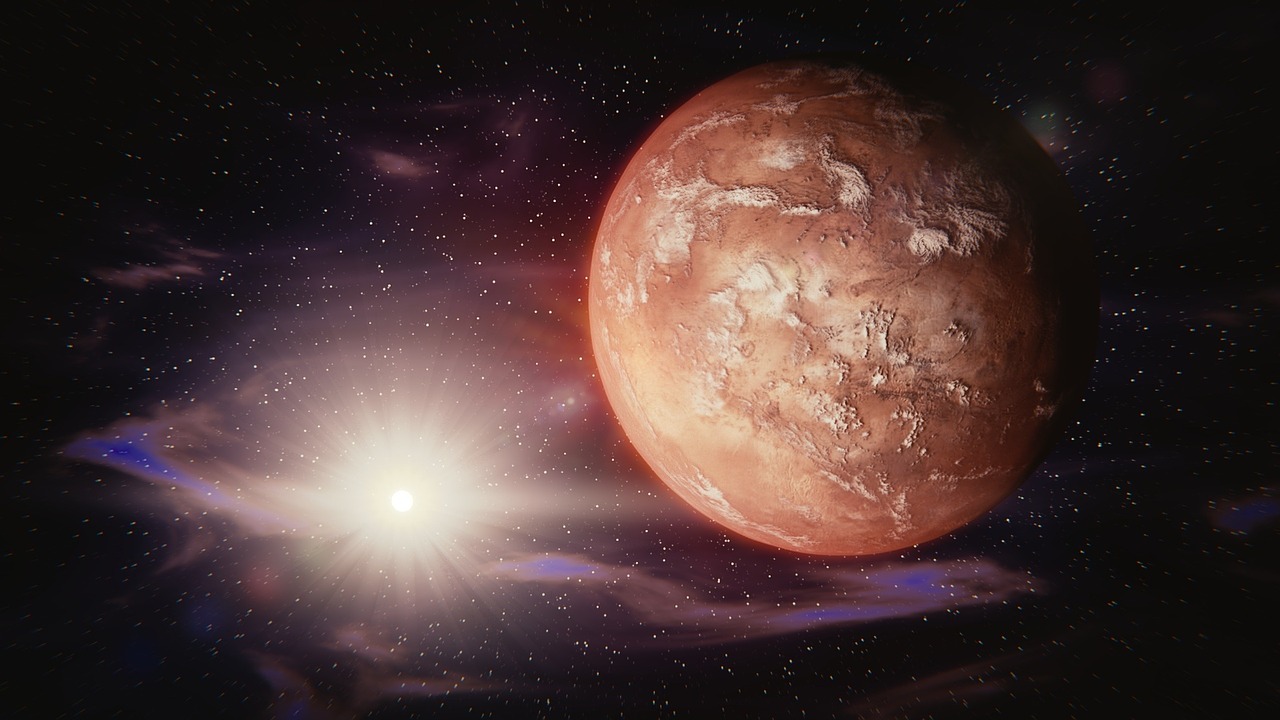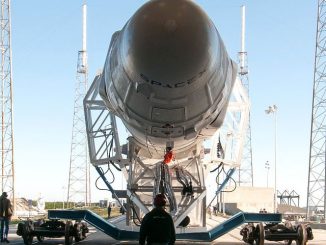
The time has come for humanity’s next step in space exploration which without question involves a journey to Mars and the process of colonizing and terraforming it. True, no easy task and definitely a massive undertaking, particularly when considering some well-known facts like the planet’s average temperature being about -55 Celsius/-67 Fahrenheit, or its atmosphere composed of 95.3% carbon dioxide, or only 1% as thick as that of Earth. However, in terms of similarities and positives, planet Earth and Mars have about the same amount of dry land surface. Both planets have seasons, are roughly in the same heat-range and have similar rotational patterns (they take approximately the same amount of time (about 24 hours) to make full rotations on their axis). Like Mars, Earth has volcanoes, mountains and valleys. Additionally, when compared to all of the Earth’s neighbors in the Solar System, Mars is the closest. What’s more, the Red Planet’s surface conditions and presence of water make it arguably a very hospitable planet.
But while there are similarities between the two planets, one should also recognize there are also major differences. Recent data show that the Red Planet is not warm and wet enough to support life. Also, its thin atmosphere, roughly 100x less dense than Earth’s atmosphere, remains one of the stumbling blocks why Mars is considered inhabitable. But thanks to MAVEN (Mars Atmosphere and Volatile Evolution Mission’), a NASA spacecraft designed to study the Martian atmosphere and one which has been orbiting the Red Planet since 2014, scientists have been getting more and more clues on what could have happened and what is currently happening on the Red Planet.
For example, in 2015, NASA was able to find out through MAVEN that Mars’ atmospheric thinning increases dramatically in the presence of a solar flare (magnetic storms on the Sun’s surface). Solar flares emanate solar winds, which are streams of high-energy, charged particles. It is believed that billions of years ago these solar winds reached Mars and stripped away much of the planet’s atmosphere, leaving it to its present condition.
NASA reported another stunning discovery by MAVEN: there is a huge “magnetotail” or magnetic tail tucked behind Mars. At the 39th annual meeting of the American Astronomical Society’s Division for Planetary Sciences, this finding was reported by Gina DiBraccio, a project scientist for MAVEN and a member of the NASA’s Goddard Space Flight Center.
“We found that Mars’ magnetic tail, or magnetotail, is unique in the solar system,” said DiBraccio. “It’s not like the magnetotail found at Venus, a planet with no magnetic field of its own, nor is it like Earth’s, which is surrounded by its own internally generated magnetic field. Instead, it is a hybrid between the two.” While Earth’s magnetic field is huge and generated internally by its own molten core, Mars only has leftover magnetism currently found in small pockets distributed throughout the planet.
There’s a theory that Mars’ protective magnetic field collapsed three billion years ago due to solar wind bombardment. Scientists believe that the planet used to have a thick atmosphere (and some water) but over time started losing 80-90% of its atmosphere as an effect of its weakened magnetic field. This could have led to Mars’ gradual shift—from a warm, possibly life-friendly planet to a cold, arid place as we know it today.
To explain why there is a magnetotail, scientists turned to “magnetic reconnection”. Whenever Mars’ magnetic fields meet rushing solar winds (which have a magnetic field of their own), the two opposing fields are broken then reconnected to form the invisible (albeit MAVEN-detected) magnetotail behind Mars.
After the magnetotail was given an explanation, scientists then connected it to the thin (and thinning) atmosphere of Mars. As the magnetotail links Mars’ residual magnetic fields to solar winds, ions in the upper atmosphere (which are responsive to magnetic fields) are given routes to escape to outer space. Akin to a stretched rubber band that suddenly snaps, magnetic reconnection releases energy that can push ions down the magnetotail and further into outer space.
Going forward, NASA scientists are set in further validating MAVEN’s magnetotail findings and confirm if magnetic reconnections are indeed the reason for Mars’ atmospheric loss and, if yes, to what extent. If magnetic fields are indeed proven to have a big role here, the argument will give weight to an earlier and perhaps a bit bizarre proposal that a powerful magnetic field be launched around Mars to halt and even reverse the depletion of Martian atmosphere which is a major factor when it comes to the planet’s inability to no longer support liquid water-a vital ingredient for life.
- Bulenox: Get 45% to 91% OFF ... Use Discount Code: UNO
- Risk Our Money Not Yours | Get 50% to 90% OFF ... Use Discount Code: MMBVBKSM
Disclaimer: This page contains affiliate links. If you choose to make a purchase after clicking a link, we may receive a commission at no additional cost to you. Thank you for your support!




Leave a Reply